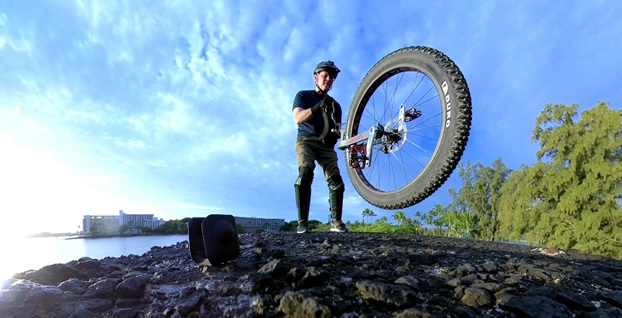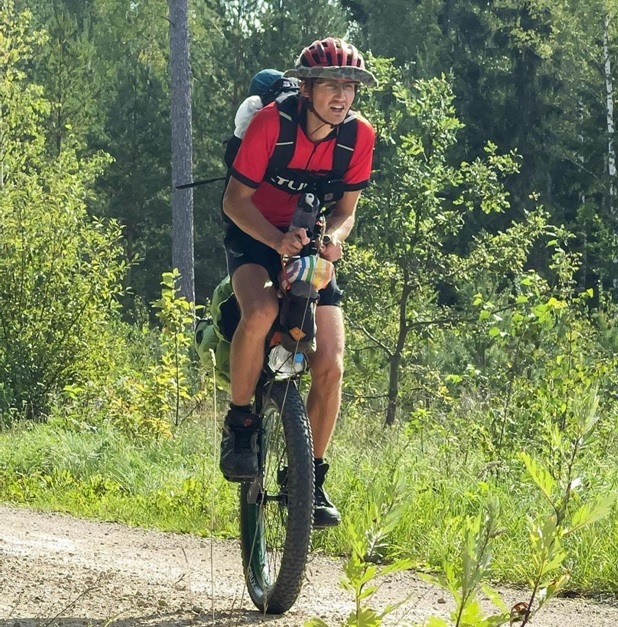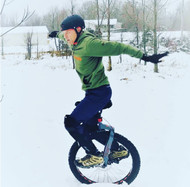How to Fall Off a Unicycle, Safely
11/05/24
If you want to learn how to ride a unicycle, you’re going to fall. It’s not pleasant, but it’s also the truth, and we’d be doing more than gilding the lily if we didn’t say so, in just those words.
We call them unplanned dismounts, and they are part and parcel of learning how to ride. The truth is, even veterans still experience unplanned dismounts from time to time. It is the nature of the beast. It happens with bicyclists, too, and they have twice as many wheels supporting them as we one-wheelers do.
And so, the point here is that you’re going to fall. Learning how to do it safely is instrumental in preventing injuries. There are some right ways to fall, and there are many bad ones. This short post will offer some tips to help keep you safer while riding.
How to Fall: Notes to Minimize the Risk of Injury
Alright, so here’s one big thing that bike riders have that we don’t: handlebars. This means that they can do something that we can’t, if they can overcome their natural instinct to brace for a fall by sticking out their arms - they can hold onto the bars.
Here’s the thing. Sticking out your arms to brace for a fall is just about the single worst thing you can do if you experience an unplanned dismount, and one of the most dangerous. You stick out an arm to try to brace for the impact, and what do you get? A broken wrist, a broken collar or elbow, or even a dislocated shoulder - sometimes much worse.
We don’t have handlebars to remind ourselves to hang onto, but at the same time, we should be coaching ourselves not to stick our arms out when we take a tumble. That is rule number one.
Rule number two is to keep your elbows tucked in. If you’re moving forward, fast, you want to keep your elbows and arms tucked in and your shoulders bent forward. If you can, lean into one of your shoulders and try to transfer your momentum into it. The goal is to roll over your shoulder so you can do two things: increase the total amount of surface area contacting the ground, and bleeding off momentum as slowly as possible.
In the case of high speeds, it’s hard to roll and you might need to try to skid. The thing is, it’s hard to get to those speeds on a unicycle, so fortunately, you’ll probably never be going fast enough that you need to skid. However, if you ever do fall off your unicycle and start to feel yourself skidding after the first roll, don’t fight it - just let the skid happen.

This is another important note with respect to falling safely (relatively) off of a unicycle. Don’t try to fight the fall. Being stiff and tense is one of the worst things you can do and welcomes injury. It might sound counterintuitive, but being tense before the fall (and bracing for it) is a sure-fire way to get hurt. Be as loose as your instincts will allow.
Also, if you can, fall on your side rather than on your front (chest) or flat on your back. It’s easier to roll over your side to absorb some of the impact and an impact against your side is less likely (keyword) to result in a serious injury, so keep that in mind.
If you fall in such a manner that your legs will make contact with the ground before any other part of your body, remember to keep your knees bent. This is critical; your legs are stouter and stronger than your arms, but still, trying to arrest any momentum rapidly through your legs, with a straight leg, is a recipe for a broken ankle or much worse. The moral is, keep your knees bent and ready to cushion the fall.
This also brings up the question of what to do with your head. Obviously, you don’t want your head to impact the ground if you can help it; but you also want to help prevent jarring impacts. To minimize the risk, tuck your chin into your chest as tightly as you can before impact.
And again, the general wisdom here is to roll over your shoulder if possible, but regardless, to roll. Rolling slows momentum gradually and it will also help you deflect any impediments that are coming towards you (or, depending on frame of reference, that you are going towards).
After a fall, once you have come to a stop, dust yourself off and inspect yourself for injuries. If you’re all good - you can get back to riding.
There’s one more thing. After you take a hard fall, inspect your safety gear, too. This includes your gloves, knee, elbow and wrist pads, but especially your helmet. If your helmet is aging and has had a couple bumps and knocks you will want to replace it, upgrading to something newer and safer if possible.

The Essentials: A Helmet, Knee, Elbow and Wrist Pads
On the note of inspecting your safety gear, we would also like to take this opportunity to mention that no amount of preparation for a fall can take the place of preparing adequately (and responsibly) with appropriate unicycle safety gear.
First and foremost, this means wearing a helmet each and every time you get in the saddle. No exceptions. It doesn’t matter if you’re riding indoors, on a padded surface, or anything like that. Accidents are accidents because we don’t expect them to happen and we can’t control them. Do not ever get in the saddle without first putting on a helmet. Period.
Past that, you might also want to consider protecting your extremities with knee, elbow and wrist pads, and gloves. Close-toed shoes are also good for protecting your feet.
Beyond this, coach yourself on good habits and learn how to fall the right way.
Here for Unicycle Safety Gear?
Whether you’re here for a helmet, knee, elbow and wrist pads, gloves, or leg armor, we have you covered. We also sell bundles to save you a bit. Get what you need today, coach yourself on good habits to prepare yourself for those unplanned dismounts that are just a part of the challenge of riding, and be safe out there!

